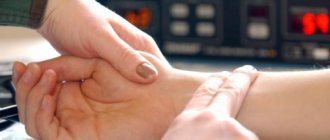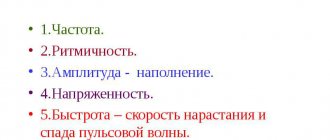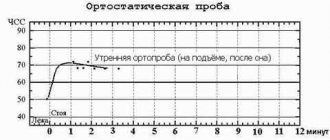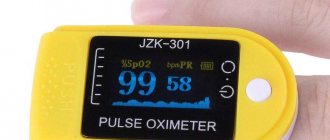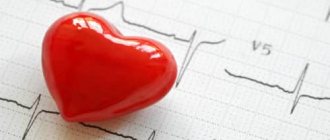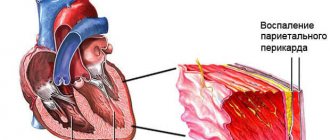Whatever type of physical activity you engage in, your body will respond to it by changing your heart rate. When starting cardio training with the goal of losing weight, novice athletes believe that the longer and faster they run (pedal, work on an elliptical trainer), the faster they will reach their cherished goal. This is not entirely true. The fat burning process starts at a certain number of heartbeats, while the heart rate for weight loss will depend on physical fitness, age and degree of training.
Maximum heart rate (MHR)
There is an opinion that fat deposits are best burned in the heart rate range, which is 60-75% of the maximum frequency. The concept of maximum frequency refers to the number obtained by subtracting your own age from the number 220, for example:
- Person aged 45 years: MHR = 220 – 45 = 175
- Person aged 25 years: MHR = 220 – 25 = 195
In reality, each person is individual and professionals carry out calculations individually, but these calculations are suitable for most amateurs.
Calculation of optimal heart rate
Let's consider two popular methods, % of MHR and according to the Karvonen formula.
It is worth noting that both approaches show strikingly different results. % MHR gives traditionally lower values and is currently the most popular in the fitness industry. For beginners, especially those involved in continuous and long-term cardio exercise, we recommend focusing on this method.
The Karvonen method is suitable for more experienced athletes and interval training, including HIIT, functional or coordination-strength (for example TRX), since the fluctuation of your heart rate during training will be significantly higher and the Karvonen formula will thus show a more adequate the limit taking into account the % of the required load, and not the percentage of the maximum heart rate.
MHR is the greatest number of heart contractions per minute, which is achieved at the limit of the body's capabilities during intense training. This is the highest number of beats per minute your heart can make at maximum effort.
- Generalized formula for calculating MHR: 220 – “your age”. For example, for a 30-year-old girl, the estimated MHR is 220-30 = 190.
- Refined Roberges-Landwehr calculation formula: 205.8 - (0.685 * age)
It's up to you to decide which formula to use. For faster mental calculations, the classic method is also suitable.
- Next, we apply the border coefficients of the desired pulse zone 0.6 and 0.7, and we get 114 = 0.6 * 190 and 133 = 0.7 * 190
(MHR - resting heart rate) * resting heart rate intensity factor
- First, you need to determine your average resting heart rate over a minute. It is very important to relax 5 minutes before the start of the test - in this case the result will be the most reliable. For the same purpose, it is advisable to carry out measurements preferably in the morning. The measurement is taken while lying down. To determine this, the internal area is palpated using a thumb, a heart rate monitor or a heart monitor.
Advice. Fitness trainers recommend taking these measurements over several days and calculating the average to achieve the greatest accuracy.
- The next stage is calculating the maximum contraction frequency (MHR). We recommend using the Roberges-Landwehr formula
- The last stage is the determination of the Contraction Reserve (RHR), which is the difference between the MHR and the heart rate at rest.
- Next, intensity coefficients are applied to the boundaries of the selected zone. For women for fat burning, this value is 0.6 and 0.7
- In conclusion, you need to add the resting heart rate to the previously obtained figure.
Let's consider an example of calculating the optimal heart rate for a conventional girl at the age of 20 using the Karvonen formula.
- Let's say a girl's resting heart rate is 62 beats per minute.
- The maximum heart rate is 205.8 – (0.685 * 20) = 192
- Let's determine the heart rate reserve: to do this, subtract the heart rate at rest from the maximum heart rate (200 - 62) and get 138 beats per minute.
- Along the boundaries of the second pulse zone, we use coefficients of 0.6 and 0.7, adding 62. The lower limit is thus equal to 144.8. Upper – 158,
- Consequently, the fat burning process starts at a minimum heart rate of 145 beats with this calculation method
Each person can use an online calculator to calculate individual heart rate zones using our calculator.
{calculator}
The next step of calculations takes into account the intensity of the activities for which the calculation is made. Each load has its own limit limits for myocardial contractions. They are calculated as a percentage of the previously determined upper limit depending on the degree of load (without taking into account the level of training):
- at low up to 65%;
- with averages 65-80%;
- at high levels of 80% and above.
An example of calculating heart rate for a 35-year-old athlete during moderate-intensity training:
- 220 – 35 = 185 (maximum limit)
- 185 * 0.65 = 120 (lower limit)
- 185 * 0.8 = 148 (upper limit)
That is, his optimal heart rate should remain in the range of 120-148 beats per minute.
On a note! The more trained the athlete, the stronger his heart muscle, and the greater the volume of blood pumped in one myocardial contraction. Under the same load, the heart rate of a trained person is slower than that of a physically untrained person. To determine the individual value, it is necessary to be guided by how you feel before and after, monitor your lung function and blood pressure.
For an untrained person, a low heart rate during running fluctuates between 130-140 beats; for a beginner, these figures are 30-40 higher. With systematic training, this number gradually decreases. Jogging in this mode is also effective because it trains the heart gradually, the person does not become exhausted so quickly, there is no shortness of breath or pain in the side.
You should not subject your heart to heavy loads from the first training sessions, as the risk of muscle micro-tears and chronic fatigue increases. To stay in the low range, after 5-10 min. While jogging, it is recommended to measure your pulse: as soon as its value reaches 145, they switch to a fast step until the heart rate drops to 120.
For a novice runner, the heart rate during cardio training, even the lightest, will fluctuate within 80% of the maximum. The main thing in playing sports is systematicity. To improve athletic performance, tone muscles and strengthen the heart, regular exercise is necessary. To develop your heart muscle, you need to start with low-intensity jogging.
The running pace should be such that the heart rate does not exceed 145. Once the limit is reached, you need to switch to a fast walk. It is necessary to restore your heart rate while walking to 120, then start running again. Work at this pace for about 30 minutes. Cardio training of this type helps reduce your heart rate when running to 120.
Enter your pressure
Move the sliders
What heart rate is needed for maximum fat burning?
There is a theory that the breakdown of fat deposits in the body occurs faster with intense training with a heart rate of 50-70% of MHR.
For example, calculation for a person aged 40 years:
- MHR = 220 – 40 = 180 beats/min.
- Lower heart rate range for fat burning: 0.5 x 180 = 90
- Upper heart rate range for fat burning: 0.7 x 180 = 126
According to this statement, for a person aged 40 to quickly get rid of fat deposits, it is necessary to perform a set of exercises with such intensity that the bullet is in the range of 90-126 beats per minute.
Be careful. Know your maximum allowable heart rate - it is different for women and men
Heart rate or pulse is the number of times your heart beats in one minute. It is lowest when you are at rest, since your body needs the least blood then. A normal resting heart rate is between 60 and 100 bpm (beats per minute), but for most people it is between 60 and 80 bpm.
It is best to calculate your resting heart rate immediately after waking up, while you are still lying in bed. With age, your resting heartbeat will change as the heart muscle becomes weaker, but you should know the basic readings anyway. If there are sudden changes or jumps, you should see a doctor, as this may indicate health problems.
When you exercise, your heart rate increases as the heart pumps more blood and oxygen throughout the body. There is a limit to the useful loads that the body must be subjected to, even when burning fat. It's called your maximum heart rate (max HR) and it's best never to exceed it. Your maximum heart rate changes over the years and can be calculated by subtracting your age from 220.
Tips for exercise to burn fat
At a heart rate of 70% of MHR, fat burning occurs as quickly as possible, however, for those who are just starting to play sports, it is necessary to start exercises with the lower limit of the heart rate, i.e. 50% of MHR. Over the course of several weeks, increase it to 70%.
Only after the body has adapted to serious physical activity can high-intensity interval training (HIIT) begin, thanks to which the metabolism accelerates and fat burning occurs at an accelerated pace. HIIT means alternating between light and heavy workouts, during which your heart rate increases and decreases.
All this has benefits for the body:
- blood pressure decreases
- insulin sensitivity increases
- endurance improves
- maintains muscle mass and burns fat tissue
During HIIT at the most intense load, the maximum heart rate should be no more than 80% of MHR; during the interval recovery period it should not fall below 40-50% of MHR.
An example of effective HIIT is as follows:
- 3-5 minutes – the body warms up (jogging, jumping rope)
- 30 seconds – performing a high-intensity exercise (sprinting)
- 1 minute – unloading (walking)
- alternating the first 3 points for 10 minutes
- after completion the recovery period is 3-5 minutes (fast walking)
Heart rate monitoring during training
To get the most out of your workout, you need to monitor your heart rate during exercise. It should not fall below the fat burning pulse zone. And also should not rise above the maximum level in order to avoid serious disorders in the body.
Heart rate monitors or fitness bracelets help measure your heart rate during exercise. They are much more convenient than stopping your workout and manually measuring your heart rate. During a stop, the heart rate may drop to a minimum, and it will be more difficult to raise it.
Many modern exercise machines already have built-in heart rate monitors. The accuracy of such heart rate monitors is questioned by some trainers. Since to correctly measure your heart rate to burn fat you need to be in constant contact with the heart rate monitor, this is not always possible during training.
In any case, you should feel your body. If dizziness, nausea, lightheadedness, or loss of strength appear, you need to stop doing the exercises. You just need to walk around and catch your breath. Under no circumstances should you stop physical activity completely. This could make things even worse.
Heart rate zones for fat burning
There are 3 main fat burning zones from MHR:
- 60-70 % — during the workout, carbohydrates are processed for the first 30 minutes, after which the process of lipolysis (breakdown of fats) begins. The duration of the workout for fat burning should last at least 45-60 minutes
- 70-80% - suitable for experienced athletes, this is an aerobic workout, it is supposed to combine cardio training (running) and strength training (work in the gym, parallel bars, horizontal bar)
- 80-90% - critical cardio load, the process of fat burning is reduced due to a decrease in the supply of oxygen to muscle tissue
How the body burns fat
The human body converts carbohydrates and fats into energy, which our cells need. Energy production is a constant process, but the source of energy can change depending on lifestyle and diet. In most cases, the body will choose the energy source that is most abundant in the body. For example, if you eat a high-carbohydrate meal immediately before a workout, your body will likely use those carbohydrates for energy, regardless of the intensity of the workout. Energy production is a complex process that occurs every second of every day. And our body is a smart machine that is used to working in the most efficient way. If you perform high-intensity exercise, the body will burn more carbohydrates, but also fats.
Now let's take a closer look at everything you really need to know about your fat burning zone, how to calculate it, and how to best use it in your workouts.
Methods for assessing the degree of cardio load
Pulse monitors are an excellent solution for tracking your heart rate, but even in their absence, you can determine the level of stress based on your personal feelings.
For this, the following indicators are used:
- very easy - conversation with a partner is maintained without problems
- easy – conversation occurs with minimal effort
- medium-easy – the conversation takes place with little tension
- moderate – it becomes more difficult to speak
- medium moderate – effort is required to carry on a conversation
- moderate – pronouncing words is quite difficult
- high – conversation occurs with great difficulty
- intense – maintaining a conversation is not possible
In addition, do not forget about the simplicity of calculating the pulse, note the number of pulse beats for 6 seconds and multiply by 10.
Cardio training for weight loss based on heart rate
Use the Karvonen method to determine your optimal heart rate zones for a given workout.
Treadmill training
- 10 minutes of warm-up easy running in the lower threshold of the second zone
- Body part: Quadriceps Equipment: Exercise machine
Treadmill workout
- 45-60 seconds of moderate at the upper limit of zone 2
- Body part: Quadriceps Equipment: Exercise machine
Walking on a treadmill
- 2 minutes easy on the lower threshold of the second zone
- Body part: Quadriceps Equipment: Exercise machine
Treadmill workout
- 20-30 minutes of walking at an average speed in the second zone
- Body part: Quadriceps Equipment: Exercise machine
* — The service is in beta testing
Aerobic exercise helps you lose weight quickly. Even if you don't have a heart rate monitor with you, use the cardio sensors on the treadmill itself to estimate your heart rate. Remember, your heart rate will gradually increase while maintaining the same speed you set at the beginning and you will find yourself outside the zone you need.
To improve your cardio performance, follow these tips:
- Take breaks and approaches at different speeds, divide the workout into a number of approaches at different intervals.
- Stick to your own heart rate for training. The most popular and effective cardio training is interval training in the form of sessions of varying pace.
- Choose a simulator just for yourself, focusing on your own sensations, comfort and mastery of equipment.
Periodically measure your resting heart rate to adjust your pulse zones, take an orthostatic test to determine how you feel on the day of training, and do your cardio training for health benefits.
Also try taking L-Carnitine and doing our short workouts for weight loss and the results will amaze you. You can easily choose a suitable and simple fitness plan for losing weight at home. We recommend trying different circuit training options and finding the ideal combination of aerobic, interval and strength training for yourself.
Why monitor your pulse?
To simplify heart rate monitoring, there are special bracelets.
Measuring your heart rate during training has recently become popular and many special gadgets have appeared - heart rate monitors that are worn on the wrist and facilitate the monitoring process. For beginners, this should become a habit, since this is the only way to correctly assess the condition of the body and stop if the condition has sharply worsened. In addition, a strong decrease or increase in heart rate is a signal about the ineffectiveness of the training or its negative impact on the heart and body. People who play sports at a professional level test their level of endurance.

